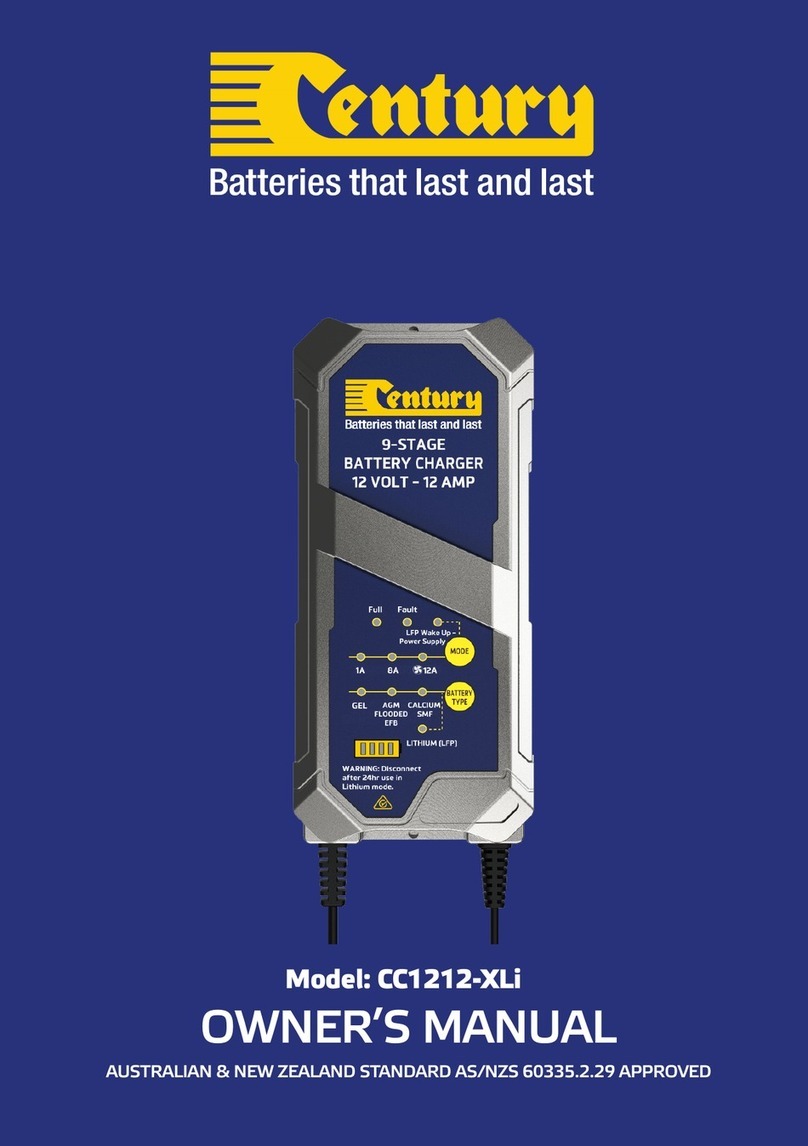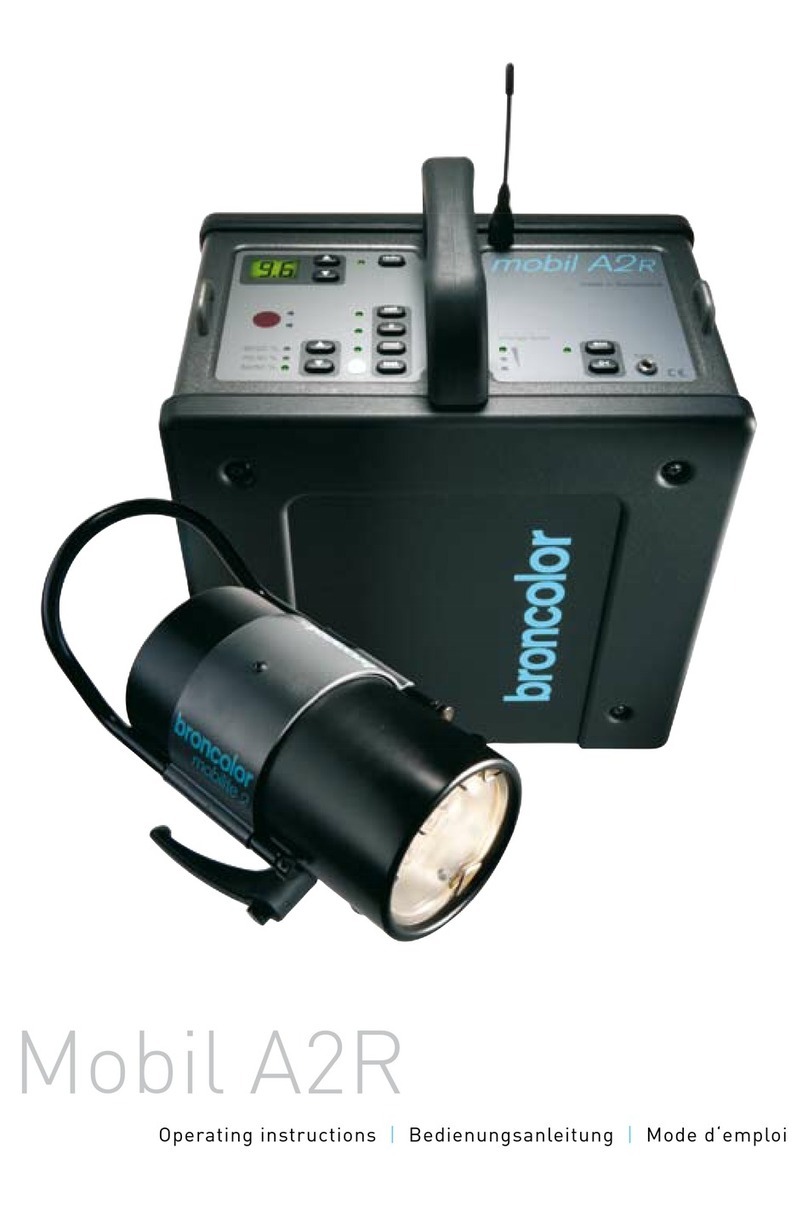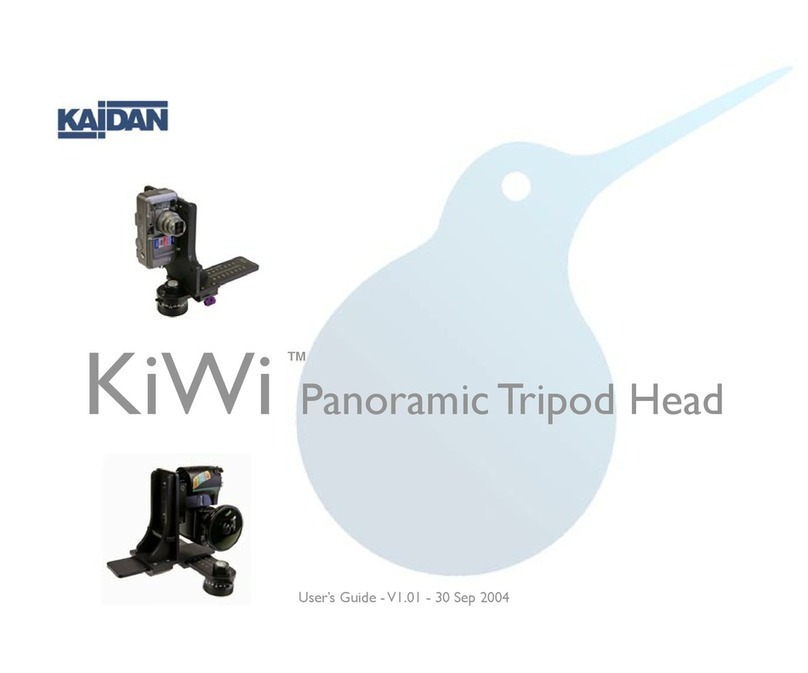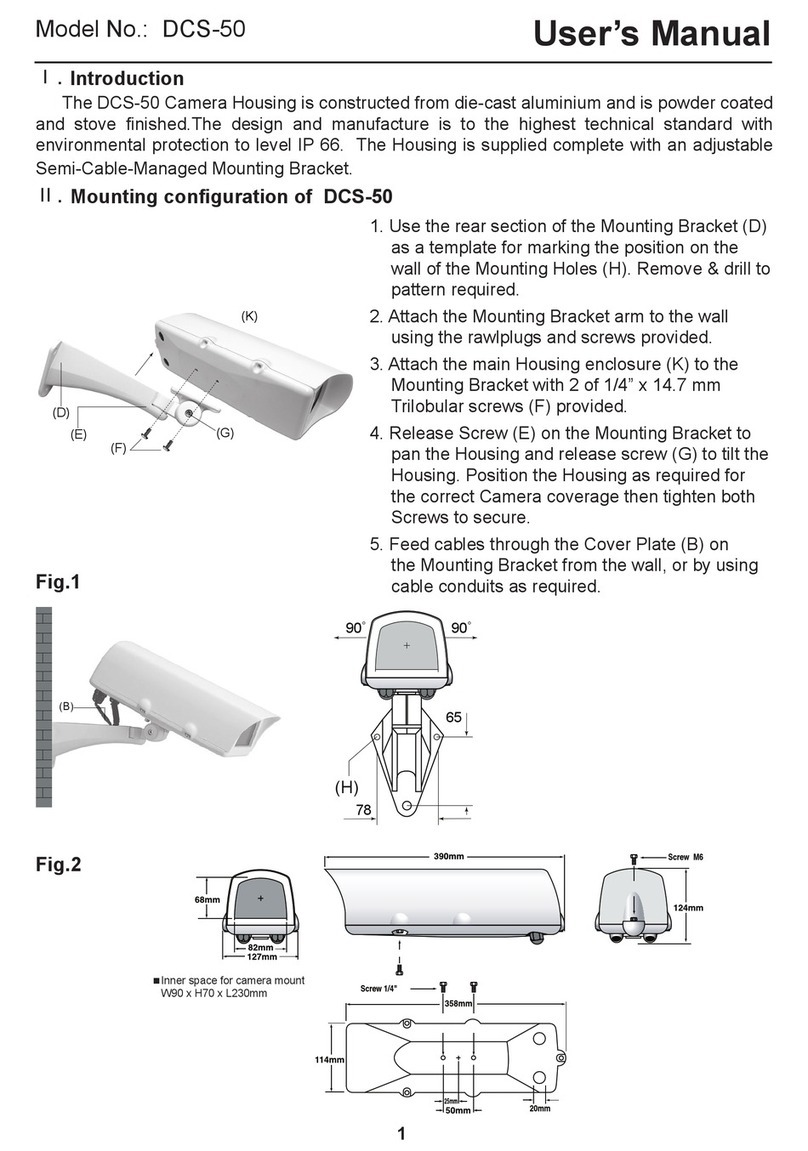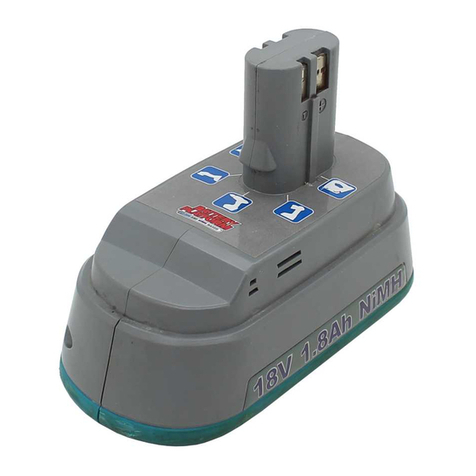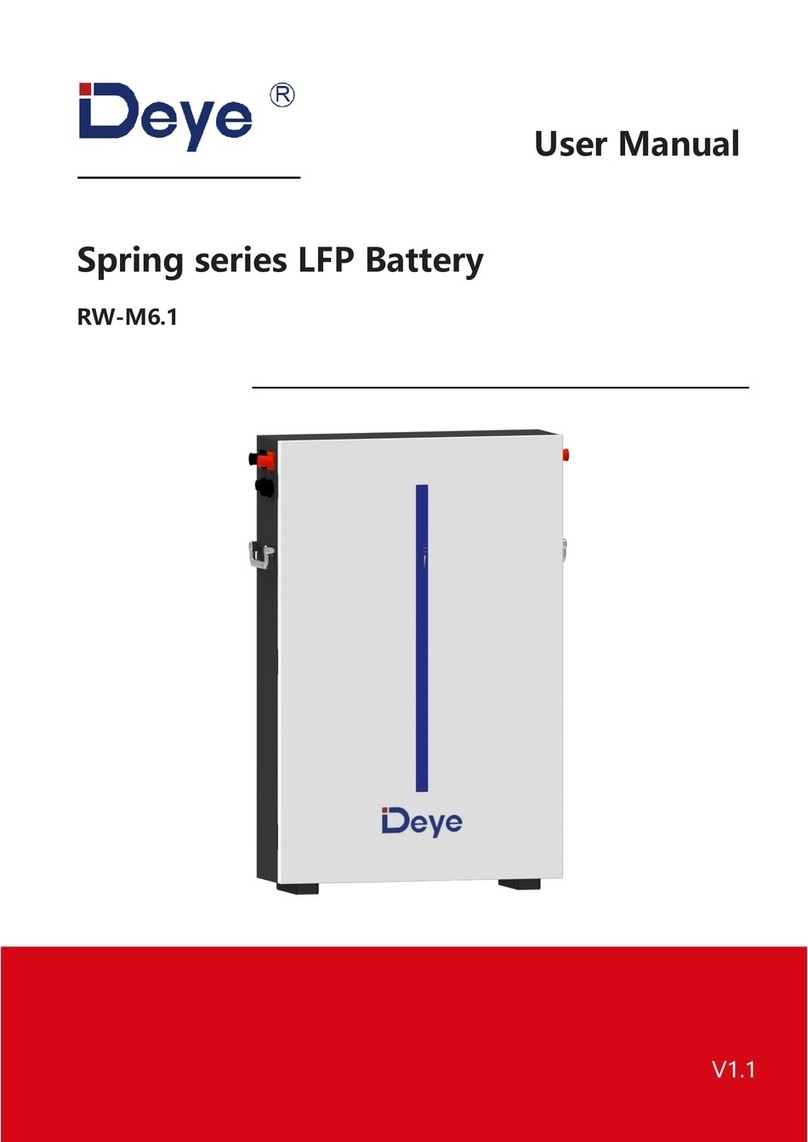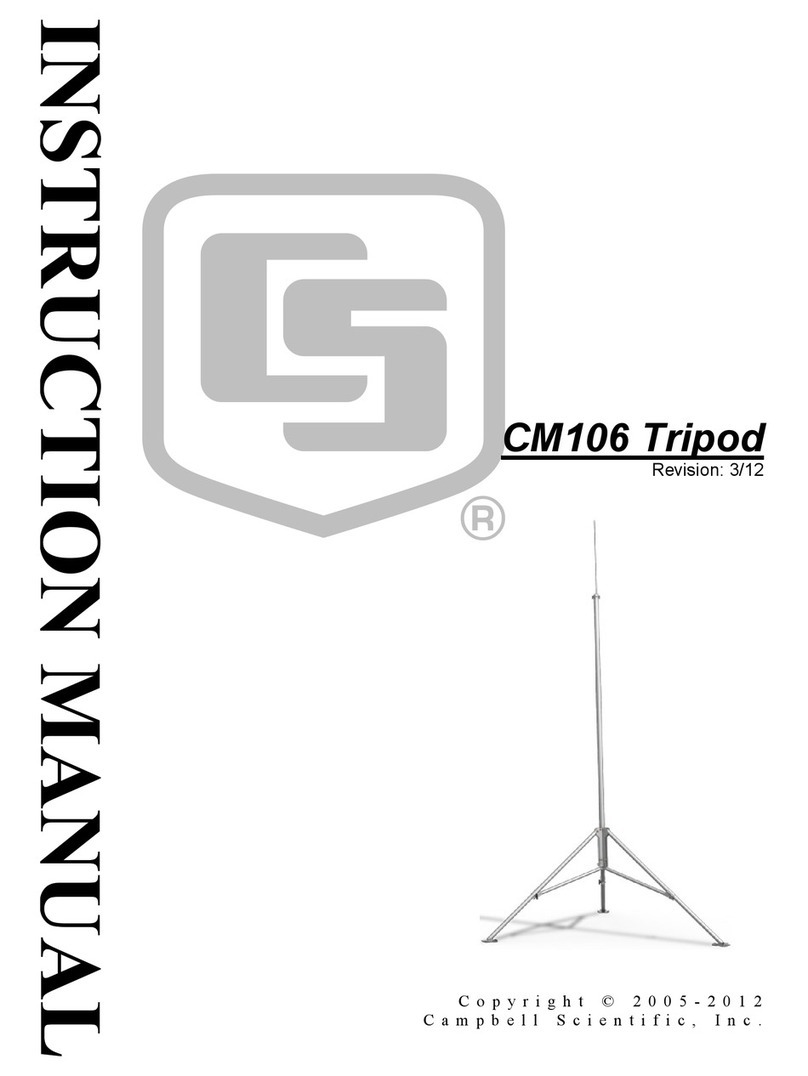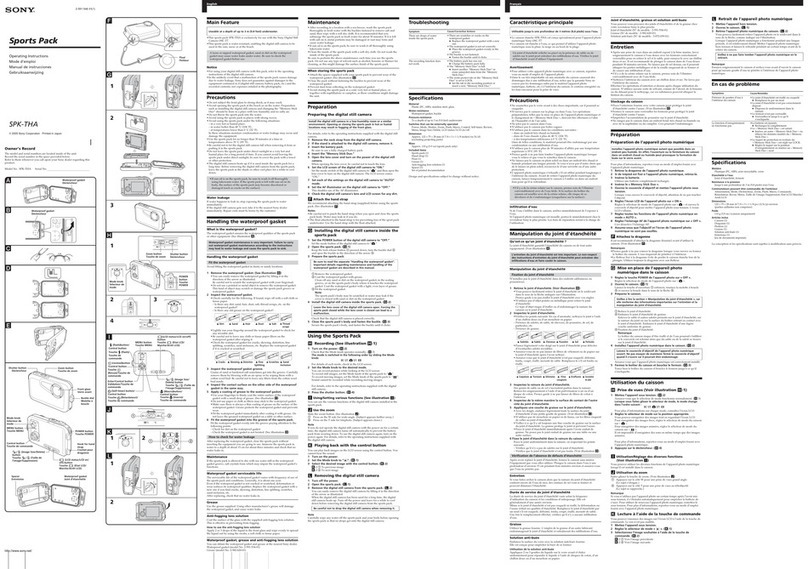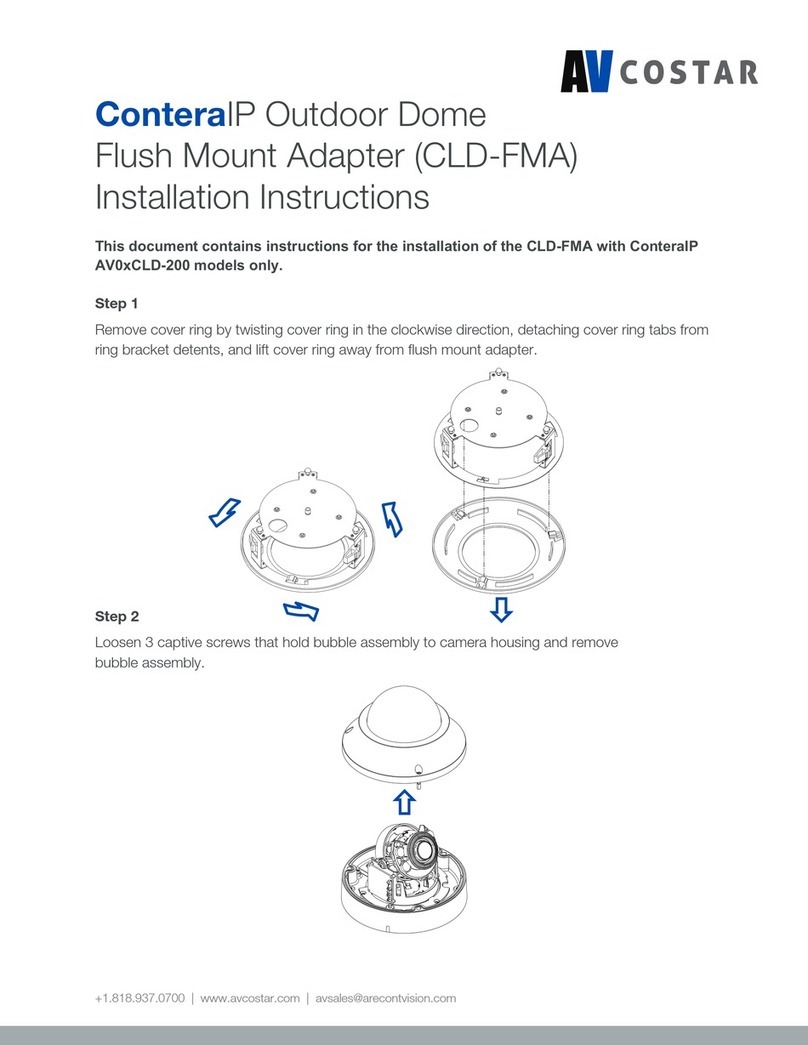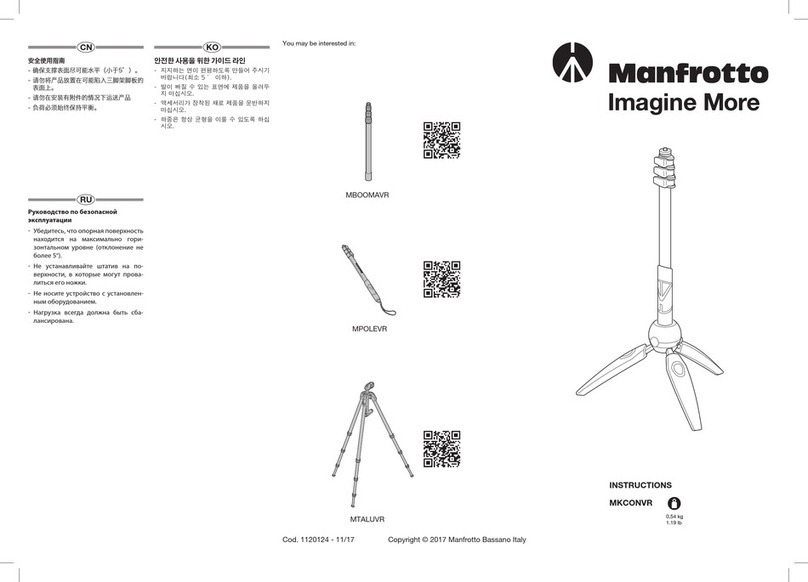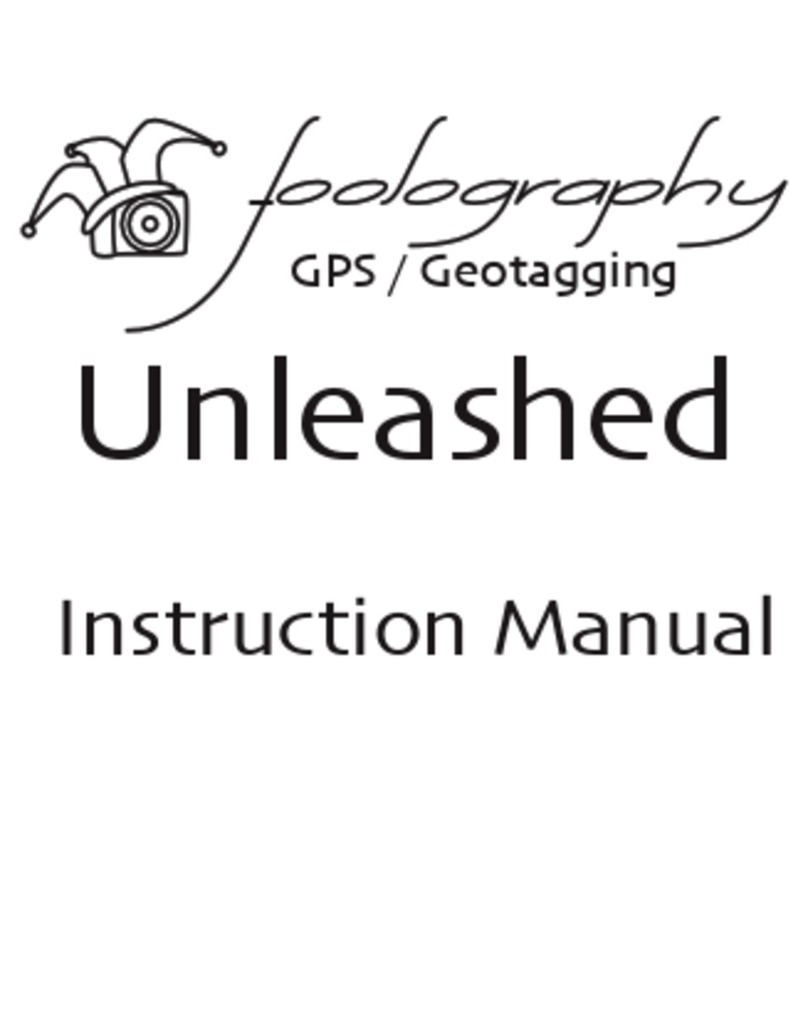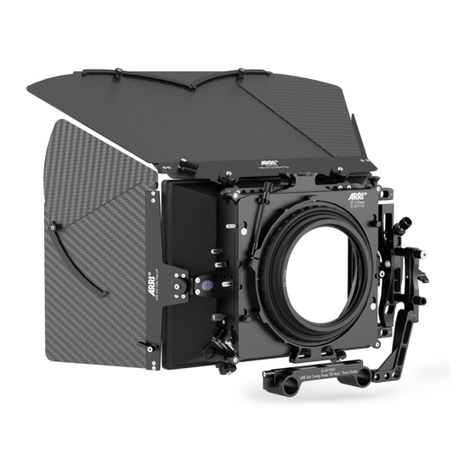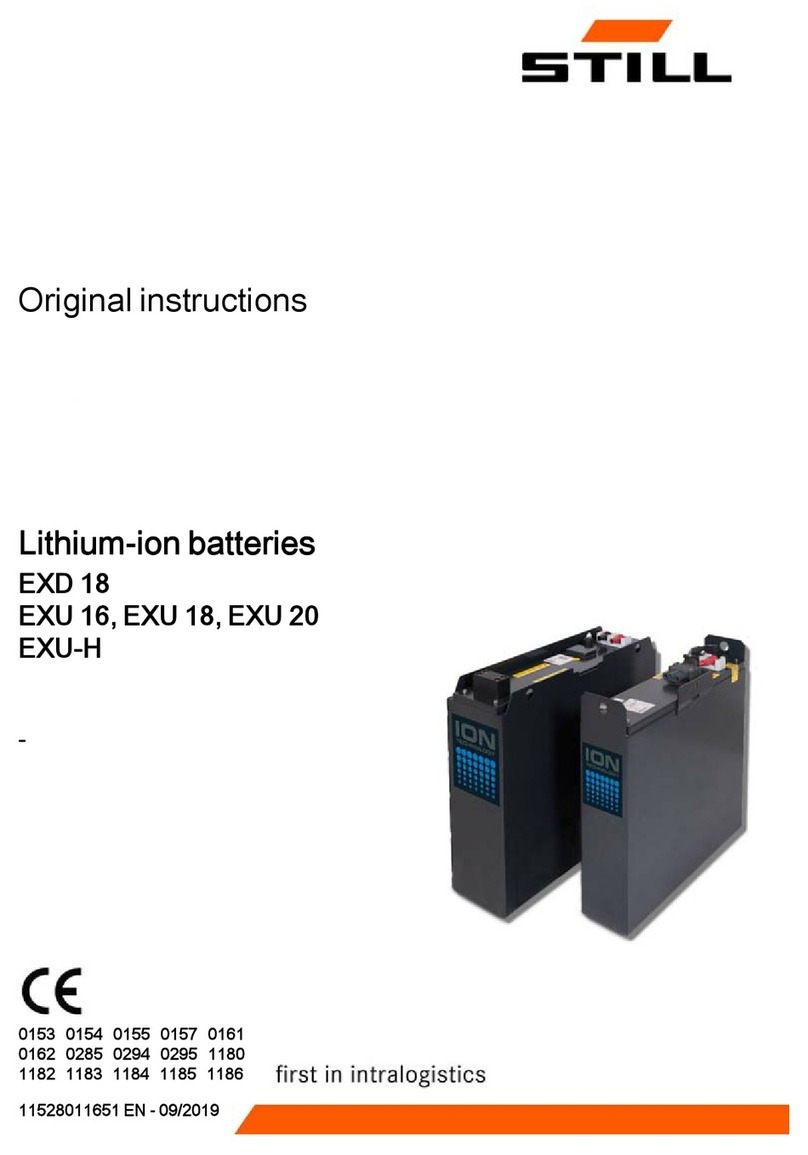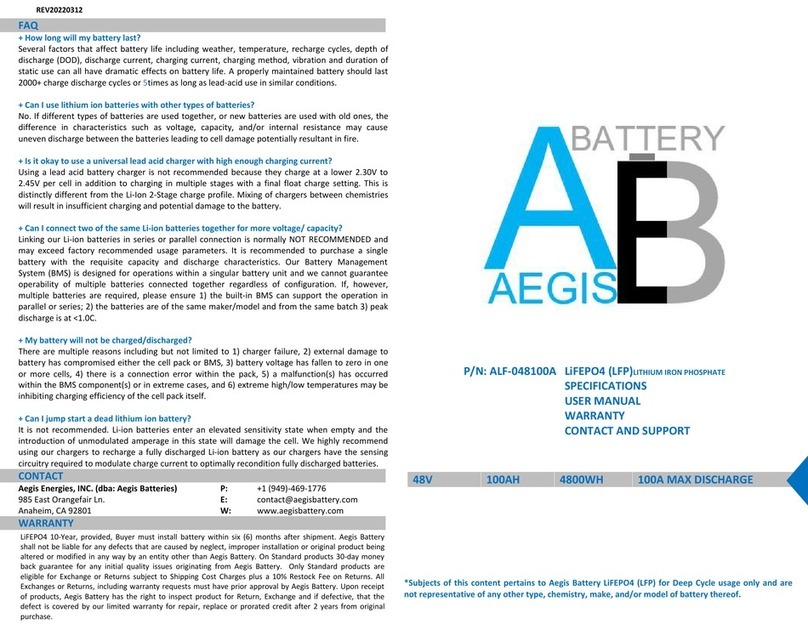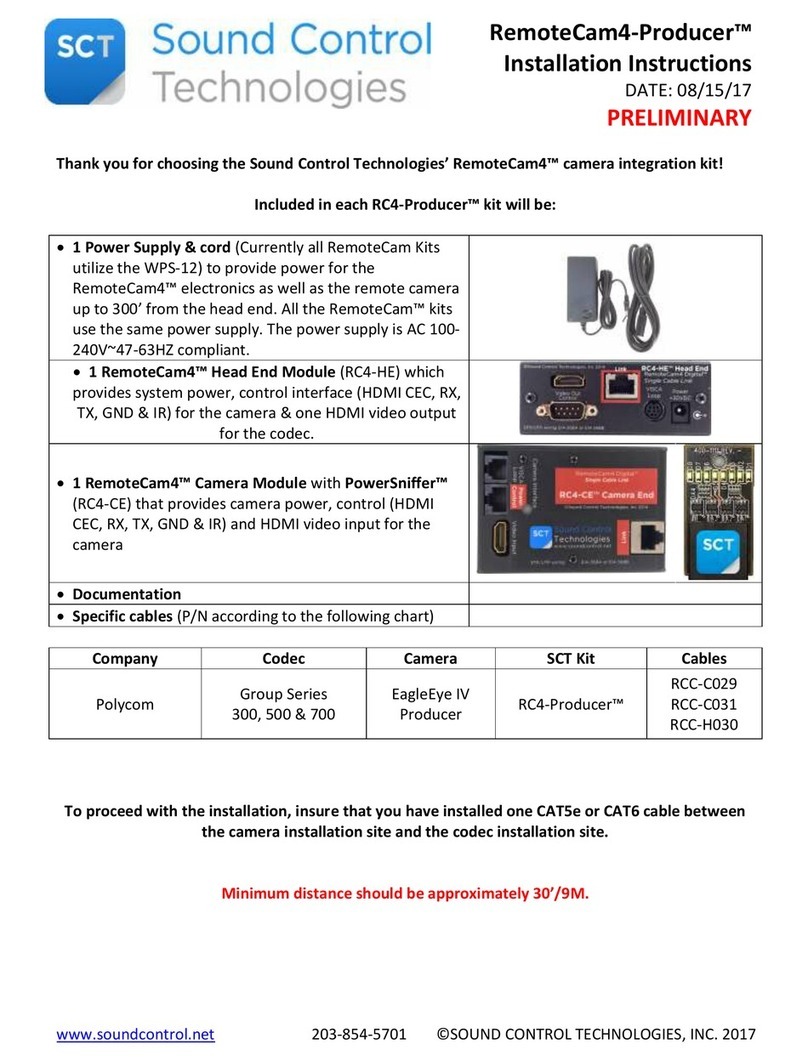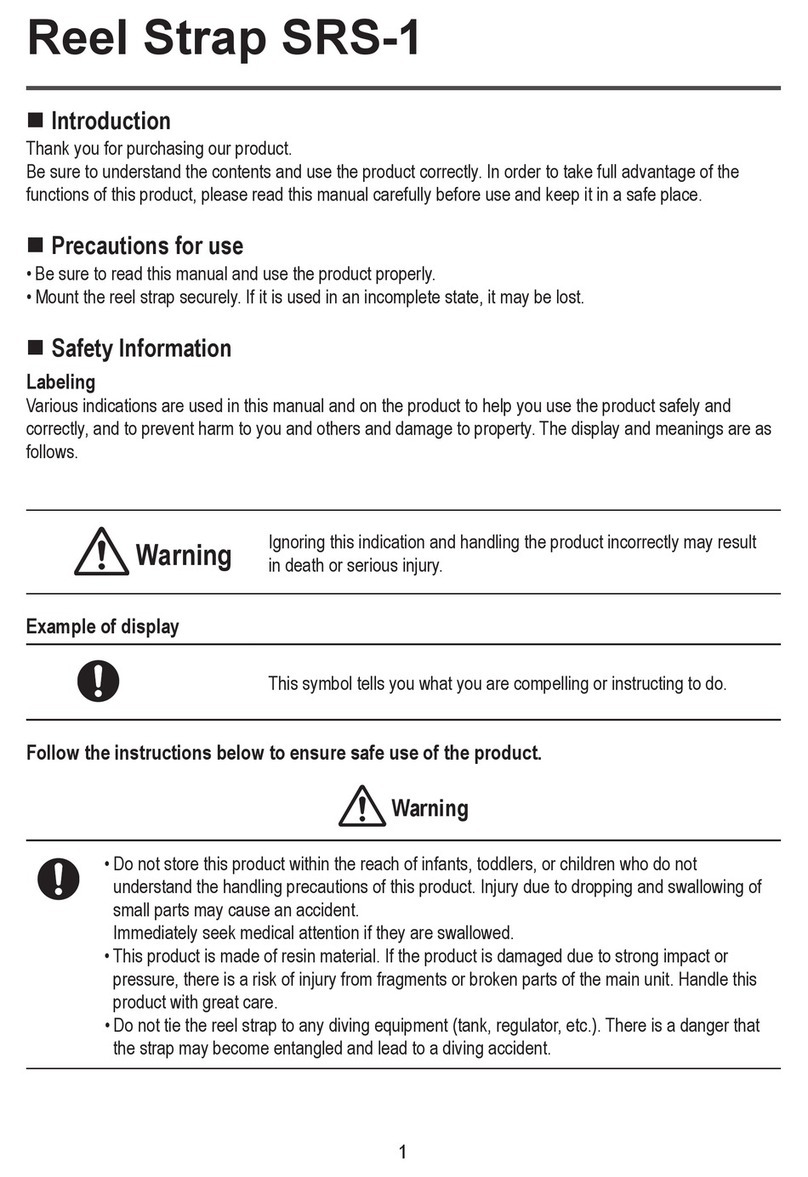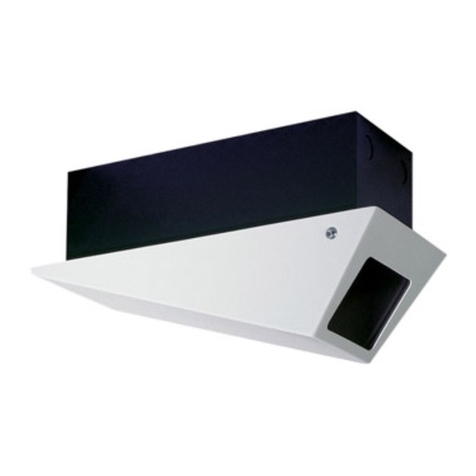Century C12-100XSLi User manual

1
LITHIUMLITHIUM PROPROLITHIUM PRO
PRO
USER MANUAL
C12-100XLi
C12-100XSLi
C12-200XLi

2
General Information
Century Lithium Pro batteries are designed to provide long lasting power in recreational deep cycle
applications.
To ensure proper safe use, optimum performance, durability, and reliability of your Century Lithium Pro battery,
please read through this user manual carefully and completely before use.
A technical data sheet and a material safety data sheet (SDS) are also available as additional information on
the Century Batteries website.
Australia: centurybatteries.com.au/lithium
New Zealand: centurybatteries.co.nz/lithium
If you have any questions concerning safety precautions, installing, or using the battery please contact
Century Yuasa Batteries. AU 1300 361 161 or NZ 0800 93 93 93
Disclaimer: All rights reserved. Information contained in this user manual is subject to change without notice or obligation.
Any information provided in or omitted from this user manual in any circumstances resulting in incidental or consequential damages or
injuries is the responsibility of the consumer and does not constitute additional liability of Century Yuasa Batteries Pty Ltd.
ADVANCED LiFePO4 TECHNOLOGY
LITHIUMLITHIUM PROPROLITHIUM PRO
PRO

3
Table of Contents
1. Introduction.................................................. 4
1.1 Product Description ............................. 4
1.2 Terminology.......................................... 5
2. Safety............................................................ 6
3. Handling and Installation ............................ 7
4. Operating Use.............................................. 8
4.1 Operating conditions............................ 8
4.2 Bluetooth connection .......................... 9
4.3 Charging............................................. 15
4.4 Discharging ........................................ 16
5. Troubleshooting......................................... 17
6. Care & Maintenance.................................. 19
7. Storage ....................................................... 19
8. Transportation ........................................... 20
9. Disposal & Recycling ................................ 20
ADVANCED LiFePO4 TECHNOLOGY
LITHIUMLITHIUM PROPROLITHIUM PRO
PRO

1. Introduction
1.1 Product Description
The Century Lithium Pro is a 12.8V lithium-ion battery incorporating Lithium Iron Phosphate (LFP or LiFePO4)
technology and is designed for recreational cyclic applications. It contains 4 or 8 cells connected in series
and in a parallel where applicable, equipped with an internal battery management system (BMS) to monitor
each single prismatic cell for correct operation of the battery, as well as the loads and charge source that are
connected to the battery.
This LFP battery is suitable for replacement of deep cycle lead acid batteries, used in RV, camper trailer,
caravan, 4WD (AUX/boot), marine, and mobility applications. This LFP battery should not be used in any
applications other than those described in this user manual. It is important to read and follow the information
provided before installation, operation, and maintenance of this battery.
MODEL
Voltage (V)
CAPACITY (Ah)
STANDARD
CHARGE
CURRENT (A)
MAX CHARGE
CURRENT (A)
STANDARD
DISCHARGE
CURRENT (A)
MAX
DISCHARGE
CURRENT (A)
DIMENSIONS
L*W*H (MM)
TERMINAL
WEIGHT (Kg)
C12-100XLi 12 100 50 100 50 100 307*172*217 M8 13.5
C12-100XSLi 12 100 50 100 60 100 508*110*236 M8 13.6
C12-200XLi 12 200 50 150 100 180^483*170*241 M8 24.5
Bluetooth QR Scan
& BMS Code
Manufacturing
Code
ADVANCED LiFePO4 TECHNOLOGY
LITHIUMLITHIUM PROPROLITHIUM PRO
PRO
(Example of C12-100XLi shown)
^Continuous discharge at maximum current at high temperature will result in reduced run time and potentially BMS cut-off for temperature protection.
4

1.2 Terminology
BMS Battery Management System
DOD Depth of Discharge
OCV Open Circuit Voltage
SOC State of Charge (%)
°C Degree Celsius in temperature
VVolt
AAmpere
Ah Capacity in Ampere-hour
M8 8mm nut insert terminal
Series Connection Batteries connected to increase
voltage by connecting positive
terminal of one battery to
negative terminal of the next
battery
Parallel Connection Batteries connected to increase
overall capacity by connecting
positive terminal of one battery
to positive terminal of the next
battery
(Example of C12-100XLi shown)
1. Handle
2. Positive terminal, M8 nut insert
3. Negative terminal, M8 nut insert
4. Top cover: Flame Retardant ABS/PC
5. Positive connecting copper bar
6. Epoxy board Insulator
7. Negative connecting copper bar
- Module to BMS
8. Connecting aluminium bars
- Prismatic cells
9. Battery module hold-down bracket
10. Electrical insulating sheet
11. Prismatic cells
12. Epoxy board insulator
13. BMS
14. Battery case: Flame Retardant ABS/PC
15. Negative connecting copper bar
ADVANCED LiFePO4 TECHNOLOGY
LITHIUMLITHIUM PROPROLITHIUM PRO
PRO
Components & Construction
5

2. Safety
Warning! Risk of fire, explosion, or burn.
Failure to install or use according to the instructions in this manual may result in early battery
failure or cause risk of electrical or fire damage to the battery and surrounding property and may
cause personal injuries.
The Century Lithium Pro LFP battery is designed with an integrated BMS to prevent internal damage to
the battery under various conditions. When this occurs in connected equipment, power can be abruptly
interrupted to the system which may cause undesirable consequence. The system installer must understand
the automatic safety shutdown functions of the BMS and shall assume all responsibility and liability for any
damages if these functions are not properly applied.
Do’s
• The battery must be kept in the original packaging until use.
• Wear personal protective equipment (eye protection and gloves) before handling.
• Keep sparks and open flames away from the battery.
• Use insulated tools when working on or with the battery.
• Secure connections with correct torque setting.
• Only connect the charger in line with recommended settings. Always disconnect the charger when working
on batteries.
• Charge the battery before installing.
• Remove charger immediately and contact the dealer if any abnormal smell or noise while on charge or when
a discharge is detected.
Don't s
• Do not drop, impact, or puncture the battery. The battery must be protected from mechanical impacts.
• Do not store the battery below 30% SOC.
• Do not use for cranking/starting applications.
• Do not install under the bonnet or engine compartment.
• Do not use the battery outside the specified temperature range.
• Do not expose to direct sunlight for extended period. During storage, the battery must be protected from
direct sunlight.
• Do not submerse in water or expose to rain for any extended periods. The battery should be stored in a cool
and dry environment.
• Do not install near heat source or flammable materials.
• Do not disassemble or modify the outer casing of the battery.
• Do not dispose of in fire, household waste or landfill
• Do not connect LFP batteries from different manufacturers, different brands, capacity, size, or type in series
or parallel.
• Over-voltage charging, incorrect wiring, reverse polarity connection or short circuits of the terminals may
damage the battery.
ADVANCED LiFePO4 TECHNOLOGY
LITHIUMLITHIUM PROPROLITHIUM PRO
PRO
6

3. Handling and Installation
• Before connecting the battery, check that the battery voltage is ≥13.3V. Recharge as required.
• Ensure that the cable connecting the battery terminals is correctly sized and in length.
• Ensure that the bolts on the terminals are firmly fastened to the recommended torque of 10~12Nm to avoid
loosening during operation.
• Ensure the maximum output voltage of any charging device connected to the battery does not exceed
14.6V before connecting. Recommended charging voltage is 14.4V
• Side mounting with terminals on the upper side is acceptable but not recommended.
Where feasible, always install upright to optimise the performance under a dynamic condition
such as vibration.
• Fully charge each battery before use and if connecting them in series or parallel.
• When connecting in parallel, ensure the capacity and voltage between each battery is consistent.
Any variance should be below 100mV.
• Do not connect different batches, types, old or new batteries in series or parallel.
• To optimise batteries with balanced cells, it is advisable not to mix batteries from a different batch and
group for parallel connection. Each battery is labelled with a production batch code and serial number.
Some may be followed by a group code. The last 3 numeric numbers are designated as the group code
such as 001, 002… For example, LA120221J270443-001: LA120221J27 is the batch code; 0443 is the
serial number and 001 is the group code. For batteries in parallel connection, check that the batch code
and group code are the same.
• The battery can be connected in series up to 4 batteries, or in parallel up to 2 batteries. For example, four
12V100Ah batteries connected in series can create a 48V100Ah battery bank; and two batteries connected
in parallel can create a 12V200Ah battery bank.
• The total maximum configuration in a string of series and/or parallel (i.e., 4S2P) is 8 batteries (refer to the
individual product spec sheets).
• Due to small variations in new LFP battery capacity, LFP batteries may be slightly unbalanced when
unpacked for multiple connection in parallel. BMS interruption of charging is likely to occur during the initial
charging which is considered normal. If the charger trips out, reset the charger until charging continues
normally. For best result, each battery should be charged individually before being connected in series or
parallel. Contact Century Yuasa Batteries for any further assistance.
ADVANCED LiFePO4 TECHNOLOGY
LITHIUMLITHIUM PROPROLITHIUM PRO
PRO
7

4. Operation Use
Caution: Improper use will cause irreversible damage to the battery and could cause battery
swelling and smoke in extreme cases.
4.1 Operating Conditions
The Century LFP battery is in sleep mode when not in use to reduce self-discharge. It will go into sleep mode
after 24 hours when the charge or discharge current is below 1A.
A charge or discharge will activate the battery from this sleep mode:
• Charge activation – Connect a charger with 1.2V above the battery voltage
• Discharge activation – Connect a load (<5kΩ)
The following operating ambient temperatures and humidity must be followed
(refer to the individual product
spec sheets in case of exceptions)
:
• Charging at between 0°C~45°C
• Discharging at between -20°C~55°C
• Ambient humidity: ≤85%
Reduce current when charging battery at temperatures <10°C and >35°C
TEMPERATURE EFFECT ON CAPACITY
Capacity (%)
110
105
100
95
90
85
80
75
70
65
60 -20 -10 0 10 20 30 40 50 60 70
Temperature (ºC)
ADVANCED LiFePO4 TECHNOLOGY
LITHIUMLITHIUM PROPROLITHIUM PRO
PRO
8

4.2 Bluetooth Connection
The Century Lithium Pro battery has an integrated wireless Bluetooth monitoring function.
The Century Lithium Pro Bluetooth App is available for iOS and Android portable smart devices and can be
downloaded from Apple App Store or Google Play Store
Through the Century Lithium Pro Bluetooth monitoring system, the following information can be read or
monitored:
• Battery Capacity • Battery State of Charge (SOC)
• Battery Voltage • Battery Current
• Individual Cell Voltage • Battery Status
• Battery State of Health • Battery Temperature
• Battery Cycle • Battery Alarm
• Battery Event Information
4.2.1 Installation and Pairing App on iOS or Android.
Download the App ‘Century Lithium Pro’.
Ensure Bluetooth is enabled on the smart device before pairing. Ensure the battery is in ‘WAKE-UP’ mode
before pairing. Activate the Bluetooth connection by charging or discharging the battery.
There are two options for pairing or connecting, by scanning the Bluetooth QR code and by the unique ID
both of which are located on the top of each battery.
Bluetooth QR Scan & BMS Code
ADVANCED LiFePO4 TECHNOLOGY
LITHIUMLITHIUM PROPROLITHIUM PRO
PRO
(Example of C12-100XLi shown)
9

a. Search the battery from the listed battery Bluetooth ID(s) on the smart device, then toggle it ON:
b. Scan the QR code on the battery and the battery Bluetooth ID will appear:
The Bluetooth Monitoring System provides point to point connection. Only one battery can be connected
to one device at a time. If more than one battery is configured in series or in parallel, each battery can be
checked in turn, one by one, on the same smart device. Simply follow the pairing/connection process for
each individual battery.
After being connected, the battery can be renamed from its ID code by the user on the smart device.
All connected batteries will appear on the first screen when accessing the App next time.
Pairing
Established
Pairing
Established
ADVANCED LiFePO4 TECHNOLOGY
LITHIUMLITHIUM PROPROLITHIUM PRO
PRO
10

Cycle count is
accumulative of ONE
full discharge
4.2.2 Using the App.
a. After connecting, touch the paired battery name and it will bring up the ‘Basic Info’ screen. This screen
shows the SOC in percentage; battery voltage; battery capacity; battery status (standby, charge, or discharge);
and battery state of health (good, or service – if below 80% initial capacity)
b. Swiping across from the Basic Info screen will show the ‘Details Info’ screen.
This screen shows battery voltage, battery current, estimated run time, individual cell voltage, battery
temperature and battery cycle count.
ADVANCED LiFePO4 TECHNOLOGY
LITHIUMLITHIUM PROPROLITHIUM PRO
PRO
11

c. Touching “ ” icon on the ‘Basic Info’ screen will bring up the ‘Alarm’ screen.
This screen displays the BMS protection function.
BMS Function
Automatic Shutoff Recovery and Automatic Restart
Over Charge Voltage
Cell ≥3.7V or Battery ≥14.8V; 3S max
Cell ≤3.45V or Battery ≤13.8V
Over Discharge Voltage
Cell ≤2.5V or Battery ≤10.0V; 3S max
Cell ≥2.8V or Battery ≥11.2V
Over Charge Current 105A for 3S or 138A for 500mS or
284-345A for 17mS
After 13S, up to 3 consecutive times.
Except at >284A, no auto recovery
Over Discharge Current 350A for 3S or 560-650A for 8mS
After 13S, up to 3 consecutive times.
Except at >560A, no auto recovery
High Temperature on Charge Above 50ºC Below 45ºC
High Temperature on Discharge Above 65ºC Below 55ºC
Low Temperature on Charge Below 0ºC Above 5ºC
Low Temperature on Discharge Below -20ºC Above -15ºC
Short Circuit Above 1200A, 400 µS No automatic recovery
ADVANCED LiFePO4 TECHNOLOGY
LITHIUMLITHIUM PROPROLITHIUM PRO
PRO
Automatic Safety Shutoff and Restart
C12-100XLi
12

BMS Function
Automatic Shutoff Recovery and Automatic Restart
Over Charge Voltage
Cell ≥3.7V or Battery ≥14.8V; 3S max
Cell ≤3.45V or Battery ≤13.8V
Over Discharge Voltage
Cell ≤2.5V or Battery ≤10.0V; 3S max
Cell ≥2.8V or Battery ≥11.2V
Over Charge Current 170A for 3S or 284-345A for 17mS
After 13S, up to 3 consecutive times.
At >284A, no auto recovery
Over Discharge Current 350A for 3S or Above 600A
for 8mS
After 13S, up to 3 consecutive times.
Except at >600A, no auto recovery
High Temperature on Charge Above 60ºC Below 50ºC
High Temperature on Discharge Above 65ºC Below 55ºC
Low Temperature on Charge Below 0ºC Above 5ºC
Low Temperature on Discharge Below -20ºC Above -15ºC
Short Circuit Above 1200A, 400 µS No automatic recovery
BMS Function
Automatic Shutoff Recovery and Automatic Restart
Over Charge Voltage
Cell ≥3.7V or Battery ≥14.8V; 1S max
Cell ≤3.45V or Battery ≤13.8V
Over Discharge Voltage
Cell ≤2.5V or Battery ≤10.0V; 1S max
Cell ≥2.8V or Battery ≥11.2V
Over Charge Current 105A for 3S or 138A for 500mS
After 10S, up to 3 consecutive times
Over Discharge Current 110A for 13S or 350A for 3S
After 10S, up to 3 consecutive times
High Temperature on Charge Above 50ºC Below 45ºC
High Temperature on Discharge Above 65ºC Below 55ºC
Low Temperature on Charge Below 0ºC Above 5ºC
Low Temperature on Discharge Below -20ºC Above -15ºC
Short Circuit Above 600A, 200 µS No automatic recovery
C12-200XLi
C12-100XSLi
ADVANCED LiFePO4 TECHNOLOGY
LITHIUMLITHIUM PROPROLITHIUM PRO
PRO
13

d. Touching the “ ” icon on any of the screen will bring up the ‘Menu’ screen.
Notification preferences can be set up on the smart device. CYB contact details, App information and user
manual can be located in this area.
ADVANCED LiFePO4 TECHNOLOGY
LITHIUMLITHIUM PROPROLITHIUM PRO
PRO
14

15
4.3 Charging
• The battery must be fully charged before first use.
• Ensure charging voltage does not exceed 14.6V. 14.4V is recommended (refer to product spec sheets in
case of exception).
• Ensure the charging current does not exceed the maximum charging current as indicated in the specification
sheet. Any inrush current may activate the short circuit protection function and charging may stop.
• Ensure charging is carried out at an ambient temperature within the recommended range of 0°C~45°C (refer
to product spec sheets in case of exception).
• Below 0°C or above 45°C may cause irreversible damage (i.e., permanent loss of capacity) to the battery or
even a safety risk.
• DO NOT charge the battery for more than 24 hours. Disconnect the LFP battery from the charger when the
charger is no longer in use.
• DO NOT use a lead-acid battery charger if it has ‘Equalisation’ and ‘De-sulphation’ mode or function.
• DO NOT leave a lead-acid battery ‘smart’ charger connected to float charge the LFP battery. This type of
charger will NOT maintain a proper voltage algorithm and can cause damage to LFP battery.
• Batteries connected in series do not need to be disassembled for individual recharging. However, each
individual battery should be fully charged before being connected in series or parallel. Even after the
charger is disconnected, the battery may not be ready until the cells are balanced. After charger has been
disconnected allow 30 minutes rest time for the battery cells to balance.
• If charging batteries in series, ensure the charging voltage is less than 14.6V times the series number.
For example, to charge 2 LFP batteries in series, the charging voltage should be less than 29.2V and the
charging current should be as recommended in the specification sheet.
• DO NOT connect more than 2 LFP batteries in parallel. The voltage difference between the 2 LFP batteries
must be below 100mV after being fully recharged and before the batteries are connected. The maximum
charging current should be the same as single battery connection.
• Some constant voltage chargers that require the detection of battery terminal voltage to start charging may
fail to activate the LFP battery from its state of under-voltage protection (Sleep Mode). The low impedance
of LFP cells may result in an inrush of current interrupting the charge. If the charger trips out, reset the
charger until charging continues normally.
CHARGING CHARACTERISTICS
Voltage (V)
14.9
14.4
13.9
13.4
12.9
12.4
11.9
0 10 20 30 40 50 60 70 80 90 100 110
Capacity (%)
0.1C
0.2C
0.5C
1C
ADVANCED LiFePO4 TECHNOLOGY
LITHIUMLITHIUM PROPROLITHIUM PRO
PRO
15

4.4. Discharging
• Do not exceed the maximum discharge current as specified in the data sheet.
• Avoid discharging the LFP battery at its maximum current (1C) several times in succession, as this may
cause the BMS to cut out.
• For 100Ah LFP battery, the maximum continuous load should not exceed 1100W. A maximum 1000W
inverter can be connected to avoid damaging the battery including the BMS and the cells. Likewise, for
200Ah LFP battery, an inverter not exceeding 2000W is recommended.
• If connecting two 100Ah LFP batteries in parallel, a maximum 2000W inverter can also be recommended.
• Constant current constant voltage charging (CCCV) is recommended for LFP batteries. Refer to diagram
below for illustration:
DISCHARGE CHARACTERISTICS
Voltage (V)
14.0
13.5
13.0
12.5
12.0
11.5
11.0
10.5
10.0
0 20 40 60 80 100 120
Capacity (%)
0.1C
0.2C
0.5C
1C
ADVANCED LiFePO4 TECHNOLOGY
LITHIUMLITHIUM PROPROLITHIUM PRO
PRO
Continuous discharge at maximum current at high temperature will result in reduced run time and potentially BMS cut-off for temperature protection.
16

17
5. Troubleshooting
NO. SIGN POSSIBLE CAUSES CORRECTIVE ACTIONS
1Battery working
time is too short
The charging voltage is lower than 14.4V, and the
battery charging capacity is less than the rated
Ampere-Hour
Use the standard charge voltage
The load is too high, and the battery ends
discharging prematurely Reduce load wattage
The cell over-voltage protection has been triggered
continuously Reduce the charge voltage (eg. 14.2V)
The ambient temperature is too high or too low, and
the battery cannot be fully charged or discharged
(capacity drop at low temperature range)
Keep working at normal ambient
temperature
In parallel string, one for the two batteries is in
sleep mode due to over-current protection
Remove connection and wake up the
battery then ensure both batteries are at
similar SOC before reconnection
In series string, the SOC of batteries is out of
balance
Disconnect the batteries and recharge
then individually to similar SOC before
reconnection
The battery life is naturally attenuated, the capacity
is reduced, and the working time is short Replace the battery
2BMS keeps cutting
off during discharge
Discharge current is too high, trigger overcurrent
protection Reduce discharge current
Voltage is too low, trigger low voltage protection Recharge the battery
In parallel string, one of the two batteries is in
sleep mode due to over current protection
Remove connection and wake up the
battery then ensure both batteries are at
similar SOC before reconnection
Inrush current has triggered over current protection Reduce load current
3BMS keeps cutting
off during charge
Charge current is too high, trigger overcurrent
protection Reduce charge current
Voltage is too high, trigger high voltage protection Disconnect charging voltage (eg. 14.2V)
4Bluetooth not
detected by the App
Battery under sleep mode Activate the battery
Mobile is more than 10m away from the battery Move the mobile closer to the battery
Mobile device cannot detect the battery Close the App and reopen it
Battery is already connected to a different device Close Bluetooth connection from the
other device
App failed to display correct battery information Update App to the latest version
5 Battery gets too hot
Frequent overload use/high current draw Use according to battery specifications
Working with the maximum continuous charge and
discharge current for a long time, the heat dissipation
environment is poor, resulting in heat accumulation
Ensure a good heat dissipation
environment
ADVANCED LiFePO4 TECHNOLOGY
LITHIUMLITHIUM PROPROLITHIUM PRO
PRO
17

ADVANCED LiFePO4 TECHNOLOGY
LITHIUMLITHIUM PROPROLITHIUM PRO
PRO
NO. SIGN POSSIBLE CAUSES CORRECTIVE ACTIONS
6Battery no voltage
reading
The battery is over-discharged below 10V and is
lower than the working voltage of the BMS, the
BMS cannot work normally
Recharge the battery in time and confirm
that the battery can be switched on
normally. If the battery cannot be turned
on again, replace the battery
BMS power supply line is damaged, BMS cannot
work normally Replace the battery
Internal power cord disconnected Replace the battery
BMS failed Replace the battery
7Sleep mode cannot
be deactivated
The activation voltage is 1.2V lower than the
battery voltage
Ensure that the charging activation voltage
is 1.2V higher than the battery voltage
The current of load is too small Disconnect the load and reconnect the
load to ensure that load resistance <5kΩ
In parallel string, one battery is in sleep mode due
to over-discharge sleep protection
Disconnect the battery and ensure both
batteries are at similar SOC before
reconnecting
8
Battery external
damage - terminal,
cover, casing
Improper operation such as drop, impact, etc. Replace the battery
9 Battery exploded
High voltage due to improper charging causes
BMS to fail, and the battery is not protected Replace the battery
Instant violent collisions, squeezing, puncture, rupture
etc. making the battery unable to release energy
10
BMS keeps cutting
off when batteries
connected in series
or parallel
One battery triggers over-voltage, under-voltage
and over-current protection, etc.
Check the load and charger situation.
Ensure the system works within the
specification. Also refer to all the above
relevant information
5. Troubleshooting continued
18

19
6. Care & Maintenance
6.1 Maintenance Inspection
• Examine the external condition of the battery. The top of battery and terminal connections should be
clean, dry, and free of corrosion.
• Check battery cables and connections are firmly secure.
• Check the battery state of charge (SOC) regularly. When not in use the Century Lithium Pro battery will
partially self-discharge.
• Depending on the charging profile used, overtime the series and parallel configured batteries may not
be equally charged. To fully balance batteries in either of these configurations, maintenance charge each
battery individually at periodic intervals.
6.2 Cleaning
• Before cleaning, disconnect the battery from the charging source and the load.
• The surface of LFP battery can be cleaned with a soft, dry cloth made of non-electroconductive material.
• Keep the area around batteries clean, dry, and away from any flammable materials.
7. Storage
• Disconnect the battery from all electrical loads and from the charger to eliminate potential parasitic loads
that may discharge the battery.
• Cover the LFP battery terminals with suitable non-electroconductive material (e.g. insulating tape or
plastic caps).
• Observe the minimum and maximum storage temperatures.
• Store in a cool, dry place. There is no specific ventilation requirements for Century Lithium Pro batteries,
however sufficient airflow should be ensured to prevent excessive heat build-up.
• Keep area free from flammable materials.
• Keep out of reach of children and animals.
• Do not store in direct sunlight.
• The battery should be stored at a state of charge of between 40% ~60% of its nominal capacity.
Storing a deep discharged battery can result in permanent damage and reduced run time.
• Allowing the battery to self-discharge to a severely low state of charge may result in the battery not
being able to be recovered.
• Check battery every 6 months, or more frequently in ambient temperatures exceeding 35°C, to
determine if charging is required.
ADVANCED LiFePO4 TECHNOLOGY
LITHIUMLITHIUM PROPROLITHIUM PRO
PRO
19

ADVANCED LiFePO4 TECHNOLOGY
LITHIUMLITHIUM PROPROLITHIUM PRO
PRO
8. Transportation
• Century Lithium Pro batteries are packed by the manufacturer to comply with all applicable national
transportation regulations.
• If the battery is not installed, it must be transported in the original packaging or equivalent material.
• It is recommended that the battery should be below 60% SOC during transportation.
• Follow all applicable national transport regulations before transporting the Century Lithium Pro batteries.
• Transporting a used, damaged or defective LFP battery may be subject to restrictions. Use a qualified
shipping agent properly certified for hazardous material shipment.
• The transport of a LFP battery is subject to the hazard classification UN3480, Class 9.
The following identification label must be attached to the package:
9. Disposal & Recycling
• Lithium batteries must not be disposed of with household or landfill waste and in
line with relevant national and or local government regulations.
• Lithium batteries can be recycled but should not be mixed with lead acid batteries.
It is important to prevent lithium-ion batteries being mixed with lead acid and or
other battery types at any stage of the recycling process.
• Refer to relevant sections of this manual, if any batteries are collected, stored and
transported for recycling.
• It is advisable to fully discharge used lithium-ion batteries prior to recycling.
• Tape or insulate the terminals of the battery with non-conductive material to
prevent short circuits.
• In the case of a damaged battery, it must also be packaged according with the
local transportation and environmental protection regulations.
• Century Lithium Pro LFP battery can be returned to CYB or a qualified disposal
facility for recycling.
Further Information
If you have any questions concerning safety precautions, installing, or using a Century Lithium Pro
battery please contact Century Yuasa Batteries.
Century Yuasa Batteries Pty Ltd,
37-65 Cobalt Street, Carole Park QLD 4300
Ph: 1300 361 161 | cyb.com.au | ABN 66 009 685 232
Century Yuasa Batteries (NZ) Ltd,
259 Church Street, Onehunga, Auckland 1643
Ph: 0800 93 93 93 | cyb.co.nz | NZBN 94 290 3937 7319
20
This manual suits for next models
2
Table of contents
Other Century Camera Accessories manuals
